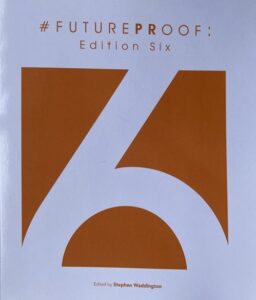Review: #PRStack: AI tools for marketing, media and public relations
My starting point is more ‘who would I most like to learn from’ than ‘what would I like to learn about’.
The ‘no code’ movement was mentioned by two other authors and this is also a reminder that AI is making coding accessible to the rest of us. For what is an AI prompt but a plain English means of instructing a machine (ie programming)?


 There’s value in a book that takes the long view of technology and asks the big questions about AI while avoiding details about the latest tools. Or there’s the instant ebook by an expert such as Christopher S. Penn whose
There’s value in a book that takes the long view of technology and asks the big questions about AI while avoiding details about the latest tools. Or there’s the instant ebook by an expert such as Christopher S. Penn whose 

